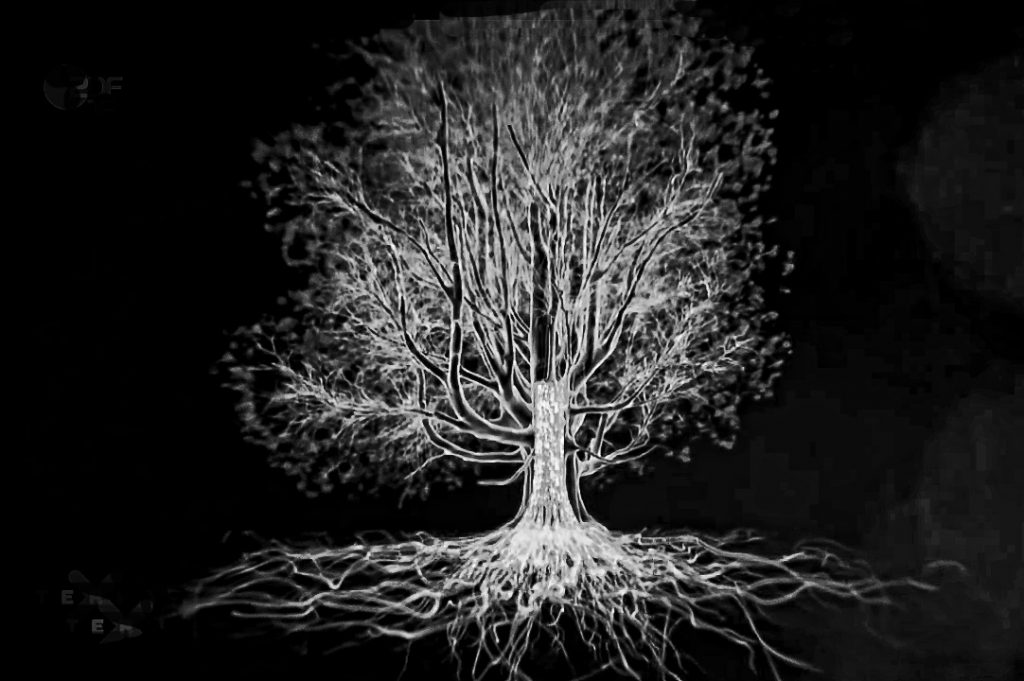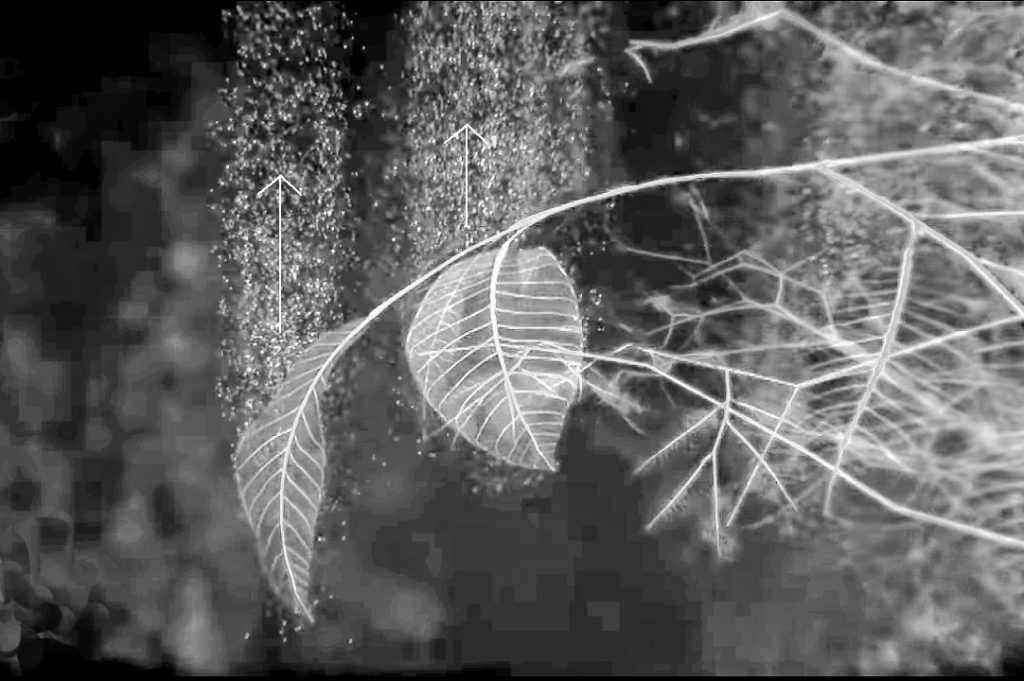Trees die slowly
21. Mai 2021
Lesezeit
11 min
Trees delight us with their first green leaves in spring. They provide shade in summer, while in winter, their branches draw beautiful images in the sky.
Trees are most valued as suppliers of oxygen (O2) and as recyclers of carbon dioxide (CO2),
which is toxic for us humans in an overdose.
But that’s only part of the story
They improve the fundamental quality of a city. They filter and cool the air, the streets, and the buildings around us. They release moisture, improve the water quality, reduce UV rays, and protect architecture from rapid decay. In addition, they significantly improve social and mental well-being, as also physical health. (*1). Unfortunately, these advantages have not yet been thrown into the balance.
More than 3.7 million people live currently in Berlin (* 2). A single healthy adult male at rest exhales about 456 liters of carbon dioxide(CO2) per day (a volume of 164 x 164 meters) (* 3). In addition, vast amounts of CO2, among other components, are released through animal husbandry, cars, factories, fuel, and land use. Through their metabolism , trees help to reduce the effects of these emissions.
Urban trees have far more advantages than we might think
But how does Oxygen production work in winter, when trees have no leaves?
The Tree:
A circulatory system
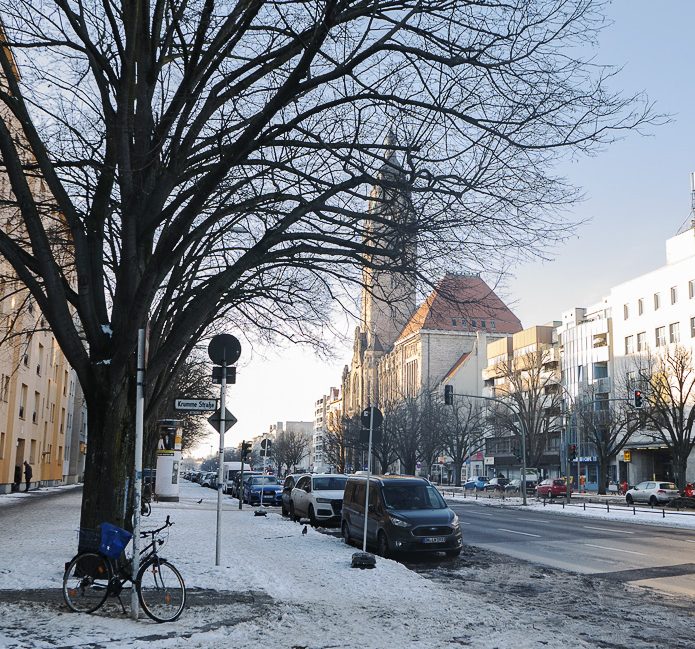
According to scientific estimates, around 50-80% of oxygen is produced in the world’s oceans. Another portion is created in the atmosphere (* 5).

Out of equilibrium
The metabolic processes of the production, consumption, storage, release, and absorption of substances are normally balanced in a natural equilibrium. If this balance is disturbed over a long period of time, for example, through human overproduction or the damage of (CO2)-processing green plants, the air changes around us. The earth’s atmosphere changes, which affects the temperature of the earth. As a result, a fatal process begins. Change starts slowly at first. However, the reaction of many interdependent cycles accelerates the development from a certain point so enormously that it finally leads to an inevitably rapid end.

Layers of the Earth’s atmosphere. Image: Shutterstock.com
CO2 is a naturally occurring, climate-affecting greenhouse gas in the earth’s atmosphere. Therefore, it is an important component of the air. Together with other gases, it reflects some of the infrared radiation that emanates from the earth. This creates an average temperature enabling the existence of diverse life. It is one of the great circulatory systems on earth that, in a healthy environment, is always in balance (* 6).
The good news
Everyone can help to preserve trees. It is ideal to water a tree with 60-100 l once a week, which is about 10 cans or 8 minutes with a water hose. Open soil needs protection from compaction and toxins (urine, winter litter). Avoid stepping on the soil around the tree.
Water in the tree’s supply circuit
As in many circulatory systems on our planet, water influences all the growth and metabolic processes also of a tree. In the photosynthesis process of green plants, CO2 is absorbed through the stomata in the leaves and transported to the interior of the cell. In the interplay between water and solar energy, nutrients are produced, which are then distributed within the plant via channels. Carbon is separated and deposited as biomass. The tree grows. As discovered by T. M. Sterling, professor at the Institute of Entomology, Plant Pathology and Weed Research at New Mexico State University, some of the water evaporates back into the ambient air via the leaves. The released oxygen is partly taken up again. It is a cycle in relative balance, connected to the global cycles.
Why can fewer trees survive each year?
The reason: Small and large supply cycles are impaired. A lack of water indirectly changes the composition of our air and leads to warmer temperatures. Carbon (C), which is bound in biomass –the wood, the leaves, and the roots– is returned to the air as carbon dioxide during normal decomposition by bacteria or animals.
This means that in an undisturbed environment, the air’s oxygen and CO2 levels are relatively balanced. The destruction of the photosynthetic circulatory systems to which the tree belongs (including the oceans) potentially promotes the increase of CO2 in the ambient air and atmosphere. The use of fossil fuels such as oil and coal, the destruction of forests through slash and burn or pellet production (* 6), and intensive land use are just some of the additional factors that cause the CO2 level to rise. Excessive CO2 changes not only the air around us but also the composition of the earth’s atmosphere and, thus, the temperatures prevailing on earth.
In the streets, human behavior has a significant influence on water absorption and, by extension, the metabolic cycle of trees.
Soil compaction, triggered by the constant vibration of traffic, as well as parked bicycles, cars, or machines for street cleaning (there have been positive changes here for some time) make the soil impermeable. It can no longer “breathe”. We have repeatedly found that water penetrates the ground by only a few centimeters, even after heavy rainfall. Natural nutrients and “new soil” can no longer be formed because the humus-forming organisms require relatively undisturbed soil. They live on dead plant material. Further damage can be caused by soil contamination such as salts (winter litter), urine, or the artificial lowering of the groundwater for, e.g., construction projects arise.
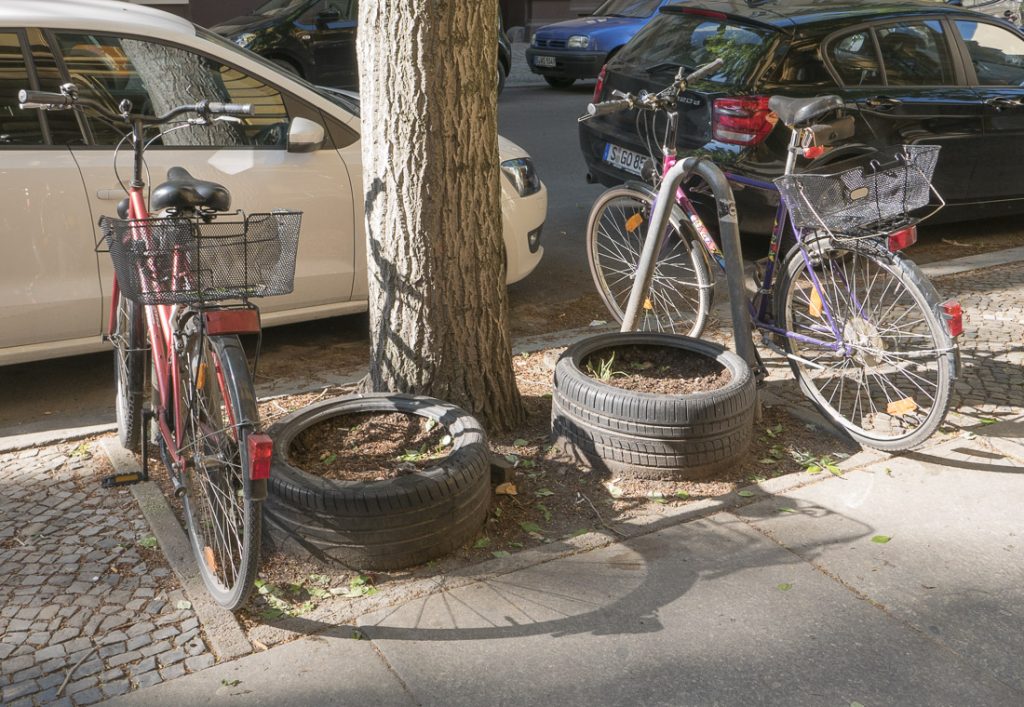
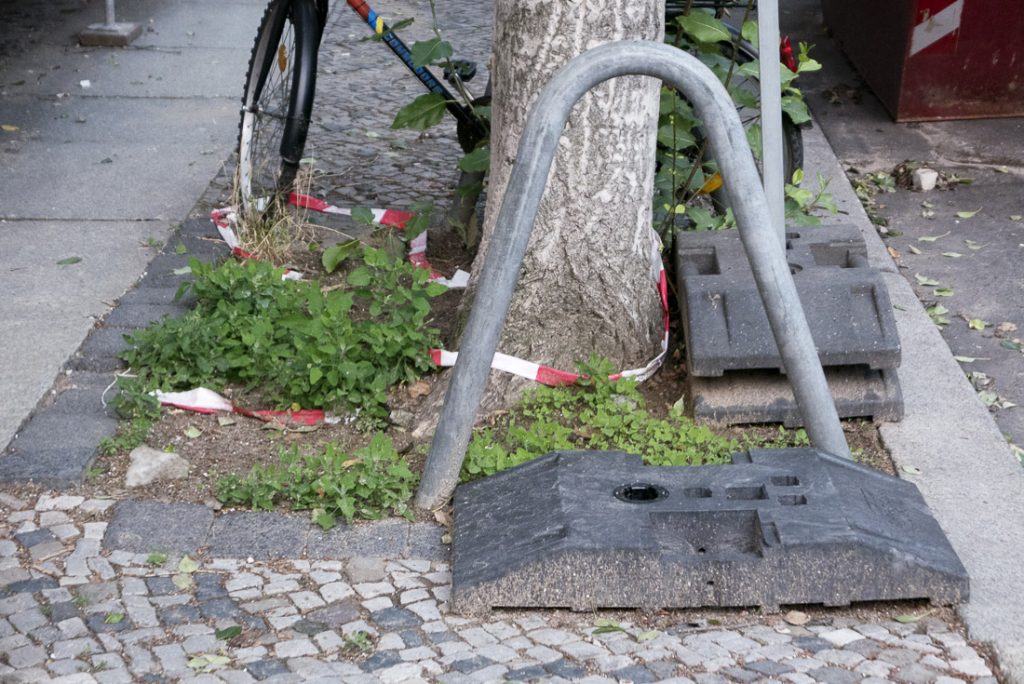

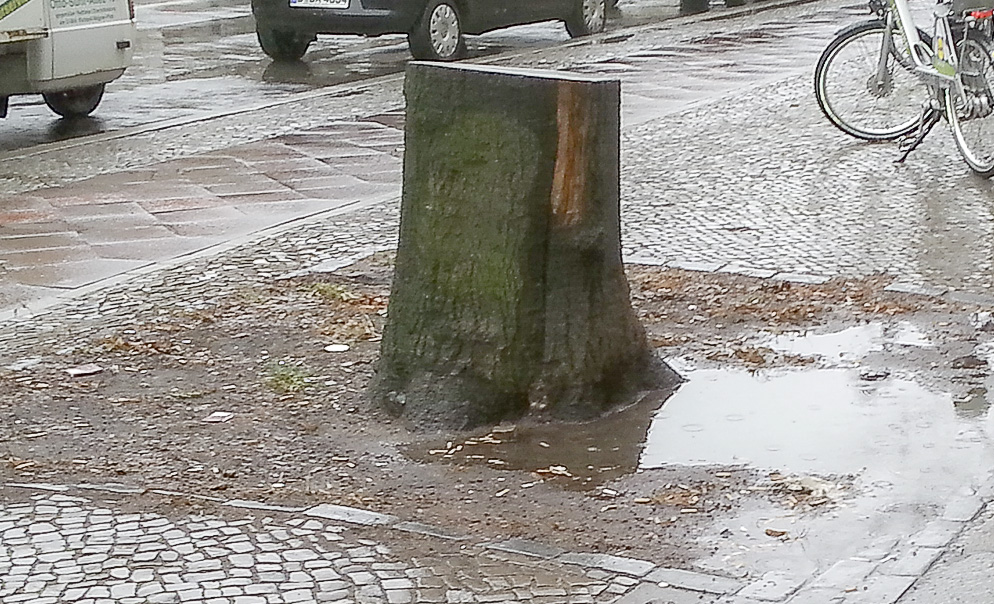
The damage exponentiate
The lack of water has far more complex effects than we think.
What does “to exponentiate” mean in this case? If it is too hot and the tree does not get enough moisture from the environment or the soil, it uses its water reserves. In addition, it closes its stomata in the leaves. In this way, the tree reduces the loss of water, among other things, but it also reduces its entire supply cycle.
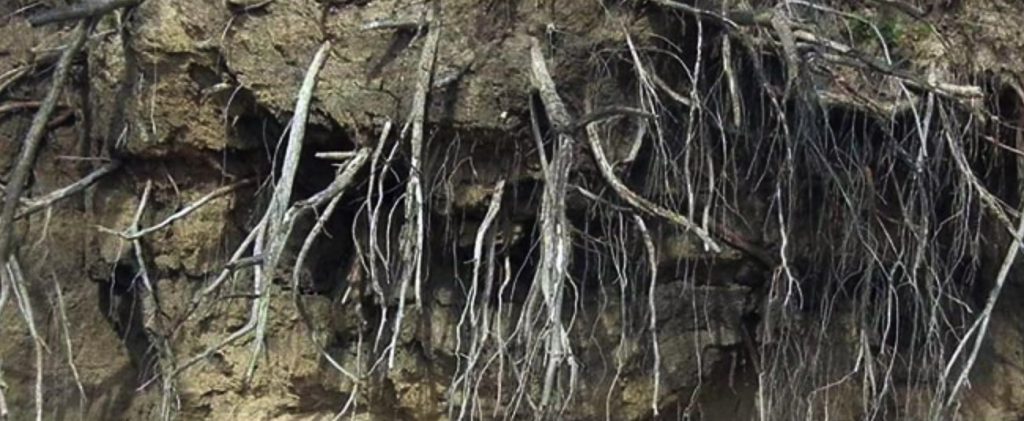
image: pixabay.com CC0
The result: Less absorption and processing of CO2, lower production and reduced transport of nutrients, less release of oxygen, less evaporation of water—the entire cycle slows down, the air gets drier, and the environment gets warmer. More CO2 remains in the air and, eventually, gets into the atmosphere, causing global warming. This constant artificially created imbalance changes the interrelated cycles many times over and at ever shorter intervals. The changes multiply. When hardly any water is flowing in the tree, i.e., when it lacks the basis of its supply cycle, it begins to starve. It becomes weak. Illness and heavy weather then have an easy time of it.
The true damage shows up years later.
To survive, the tree begins to adapt to the new situation. It reduces its release of water and, inevitably, its production of nutrients. It tries to develop alternatives. But: natural development processes have a predetermined time frame. To adapt, a tree needs certain preconditions and many growing seasons. Neither the time scale nor the preconditions correspond to the rapid changes caused by human influence. It is a highly complex interlocking of cycles and mechanisms that raises far-reaching questions for us and our actions at all levels. Lots of small actions have a significant impact on the big picture.
Lots of small actions have a significant impact on the big picture.
Replanting:
Due to the city’s continuous efforts to reforest, Berlin still had 431,000 street trees up to some time ago. However, the federal capital’s tree population is declining sharply. In the last very dry years between 2016 and 2019, the city lost 7,000 trees (* 7).
Drought, illnesses or heavy weather cause the damage. Direct and indirect influences from building projects play a not-insignificant role.
More maintenance of existing trees instead of replanting
The city is trying to plant new trees but this has many negative effects: problematic abiotic factors such as phytotoxins, nutrient imbalance, low or high pH, and poor soil structure.
In addition, the water supply is normally guaranteed for only 3 years. In summary, it can be said that it is even more difficult for a newly planted tree to survive and grow than for an existing tree to survive.
What can we do?
THE GOOD NEWS: everyone can help preserve trees with small changes in their behavior. It helps to water a tree more often with several buckets of water. The ideal would be 60-100 l once a week, which is about 10 cans or 8 minutes with a water hose. In addition, open soil needs protection from compaction and the entry of toxins (urine, winter litter). Throw your refuse in trash cans and avoid stepping on the soil around the tree. If everyone takes a step in the right direction, the positive result increases exponentially as well. We will remember, more than 3.6 million people live in Berlin.
Citation and links please click here
Quellen:
- Nowak DJ, Hoehn R, Crane DE. Oxygen production by urban trees in the United States. Arboriculture and Urban Forestry. 2007;33(3):220-226.
- Senatsverwaltung für Umwelt Verkehr und Klimaschutz. Einzelbäume in Reinickendorf / Land Berlin. Published 2021. Accessed April 22, 2021. https://www.berlin.de/senuvk/umwelt/stadtgruen/stadtbaeume/de/einzelbaeume/reinicke/dicke_marie.shtml.
- Levine JS. Burden of Breathing – The New York Times. The New York Times. Published online 1990:Section C, Page 10 of the National edition. Accessed March 13, 2021. https://www.nytimes.com/1990/08/14/science/q-a-burden-of-breathing.html.
- Klein D, Schulz C. Kohlenstoffspeicherung von Bäumen. Merkblatt 27 der Bayerischen Landesanstalt für Wald und Forstwirtschaft. Published online 2011:6. www.lwf.bayern.de.
- Johnson FS. The balance of atmospheric oxygen and carbon dioxide, Biological Conservation. Elsevier, ed. 1970;2(2):83-89.
- Milman TDO. The dirty little secret behind “clean energy” wood pellets | Biomass and bioenergy. The Guardian. Published 2018. Accessed April 5, 2021. https://www.theguardian.com/environment/2018/jun/30/wood-pellets-biomass-environmental-impact.
- Senat für Umwelt Verkehr und Klimaschutz- Berlin. Daten und Fakten zu Straßenbäumen / Land Berlin. Published 2019. Accessed April 22, 2021. https://www.berlin.de/senuvk/umwelt/stadtgruen/stadtbaeume/de/daten_fakten/uebersichten/index.shtml.
Bildquelle:
Copyright Claudia Okonek and VG Bildkunst, all images.
Exception: authors displayed below wich will be mentioned on the image.
Bild: Shutterstock.com, pixabay.com

